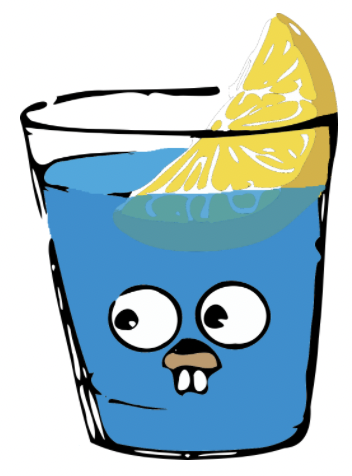Intro

Gin Web Framework
Gin is a web framework written in Go (Golang). It features a martini-like API with performance that is up to 40 times faster thanks to httprouter. If you need performance and good productivity, you will love Gin.
Hands-On Full-Stack Development with Go 책을 참고하여 Go의 CRUD web api를 만들어보았다.
Pagination 및 Swagger를 추가한 코드는 git에서 확인가능하다.
src
├── app
│ ├── models
│ │ └── models.go
│ ├── dblayer
│ │ ├── dblayer.go
│ │ └── orm.go
│ └── rest
│ ├── handler.go
│ └── rest.go
│
├── app2
├── app3
├── ...
│
├── database
│ └── database.go
├── routes
│ └── routes.go
├── main.go
│
├── go.mod
└── go.sumapp
위에서 언급한 책에서는 여러 로직이 섞여서 프로젝트가 구성되어있었다. Django의 구조를 참고하여 로직별로 app을 분리하였다. app 폴더에는 models, dblayer rest 이렇게 3개의 package가 존재한다.
1. models : 모델 정의 django의 models.py와 대응된다.
-
models.go
package models // Content 구조체 정의 type Content struct { // gorm.Model // gorm.Model은 db구조를 변형한다. ID int `gorm:"column:content_id" json:"content_id"` Title string `gorm:"column:title" json:"title"` Summary string `gorm:"column:summary" json:"summary"` Content string `gorm:"column:content" json:"content"` CreatedAt string `gorm:"column:created_at" json:"created_at"` UpdatedAt string `gorm:"column:updated_at" json:"updated_at"` User int `gorm:"column:user" json:"user"` } // Content 함수 정의 // gorm에서 호출하는 테이블 명 커스텀 // 기본값 Content -> contents func (Content) TableName() string { return "content_content" } -
dblayer : 데이터 베이스와 관련된 코드
- dblayer.go
- 데이터베이스 레이어의 모든 동작을 정의하는 인터페이스이다.
- 데이터베이스 레이어 밖의 모든 데이터베이스 관련 코드는 이 인터페이스의 메서드만을 사용한다.
package dblayer import "go-api/content/models" // DBLayer 인터페이스 정의 type DBLayer interface { GetAllContents() ([]models.Content, error) } ``` - orm.go
package dblayer import ( "database/sql" "go-api/content/models" "gorm.io/driver/mysql" "gorm.io/gorm" ) // ---------------------------------- // DBORM 구조체 정의 // *gorm.DB 타입을 임베드 type DBORM struct { *gorm.DB } // DBORM 생성자 정의 func NewORM(dbengine string, dsn string) (*DBORM, error) { sqlDB, err := sql.Open(dbengine, dsn) // gorm.Open은 *gorm.DB 타입을 초기화한다. gormDB, err := gorm.Open(mysql.New(mysql.Config{ Conn: sqlDB, }), &gorm.Config{}) return &DBORM{ DB: gormDB, }, err } // DBORM 함수 정의 func (db *DBORM) GetAllContents() (contents []models.Content, err error) { return contents, db.Find(&contents).Error } // ---------------------------------- - dblayer.go
2. rest
-
handler.go
-
클라이언트의 요청을 처리
-
django의 views.py에 대응한다.
-
데이터베이스의 crud와 관련된 함수는 dblayer interface에서 정의된 함수를 사용한다.
-
인증 및 권한, 오류 코드 처리 등과 같은 로직이 추가된다.
package rest import ( "go-api/content/dblayer" "go-api/database" "strconv" "net/http" "github.com/gin-gonic/gin" ) // Handler Class 정의 ----------------- // Handler 구조체 정의 type Handler struct { db dblayer.DBLayer } // Handler 구조체의 생성자는 정의하지 않음 // Handler 함수 정의 func (h *Handler) GetContents(c *gin.Context) { if h.db == nil { c.JSON(http.StatusInternalServerError, gin.H{"error": "dsn 오류"}) return } contents, err := h.db.GetAllContents() // dblayer의 함수 호출 if err != nil { c.JSON(http.StatusInternalServerError, gin.H{"error": err.Error()}) return } c.JSON(http.StatusOK, contents) } // ---------------------------------- // HandlerInterface 정의 type HandlerInterface interface { // HandlerInterface는 다음과 같은 함수를 갖는다. GetContents(c *gin.Context) GetContent(c *gin.Context) } // HandlerInterface 생성자 정의 func NewHandler() (HandlerInterface, error) { dsn := database.DataSource // DBORM 초기화 - DBORM 생성자 호출 db, err := dblayer.NewORM("mysql", dsn) if err != nil { return nil, err } return &Handler{ db: db, }, nil } // ----------------------------------
-
- rest.go
-
RESTfull AP의 entrypoint function 선언부이다.
- handler.go에서 정의한 handler 와 entrypoint를 연결한다.
- django의 urls.py와 대응한다.
package rest import "github.com/gin-gonic/gin" func AddContentRoutes(rg *gin.RouterGroup) { content := rg.Group("/content") h, _ := NewHandler() content.GET("/list", h.GetContents) content.GET("/:id", h.GetContent) }
-
main
1. database
- database.go
데이터 베이스 접근과 관련된 코드를 포함한다. 환경변수의 값을 참조하여 프로젝트 내부에서 db에 접근하는 것을 편리하게 도와준다.
2. routes
-
routes.go
여러 app속에 들어있는 rest를 묶어서 하나의 route를 생성한다.
baseUrl과 swagger 추가할 수 있다.package routes import ( "github.com/gin-gonic/gin" content_rest "go-api/content/rest" ) func Run(address string) error { router := gin.Default() v1 := router.Group("/") content_rest.AddContentRoutes(v1) return router.Run(address) }
3. main
- main.go
func main() { routes.Run(":8000") }
Reference
- Hands-On Full-Stack Development with Go
- https://github.com/gin-gonic/gin
